Do-it-yourself sofa upholstery

Sometimes I really want to change the atmosphere in the apartment and change the furniture. Sometimes an old sofa simply loses its original appearance, but there is no money to buy a new one. What to do in this case? There is a way out - a hand-made banner of the sofa!
Let's get acquainted in more detail with all aspects and stages of this, at first glance, difficult process.
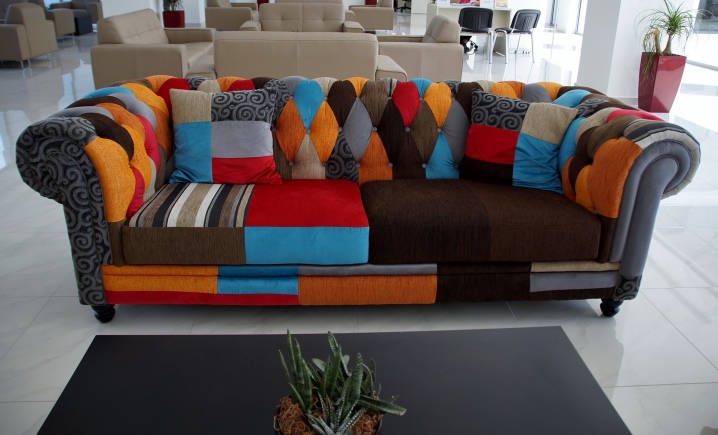
Which fabric to choose and which filler is right?
Let's take a closer look at the most popular materials for external upholstery and interior filling. Not every material, of all existing ones, can be suitable for stretching sofas - certain properties are required, for example:
- the fabric must have a high degree of wear resistance;
- the material should be dense and color-fast - that is, the color should not fade and fade over time;
- the upholstery should not shrink, the fabric should shrink and stretch well if necessary;
- friction resistance - no pellets should form on the fabric;
- it is best that the material has a special impregnation, which protects it from the absorption of liquids and the appearance of stubborn stains;
- it is good if the material has such qualities as environmental friendliness and fire resistance;
- the fabric must be breathable - it is this quality that will help prevent the material from creeping along the seams.
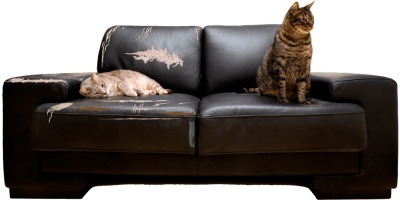
Let's take a closer look at the most popular options for upholstery fabrics for sofas, the features and benefits of each of them
Flock
This is the name of a non-woven material, which is made by gluing the fibers of the material with a special base. It is resistant to damage, easy to clean, does not fade and does not absorb moisture. In addition, animal hair does not adhere to this material, therefore, when caring for the surface of the sofa, it will be enough to wipe it with a damp cloth.
Among the disadvantages of the material, they note low wear resistance - the fabric wears out quickly, and also has a tendency to absorb odors, including unpleasant ones.
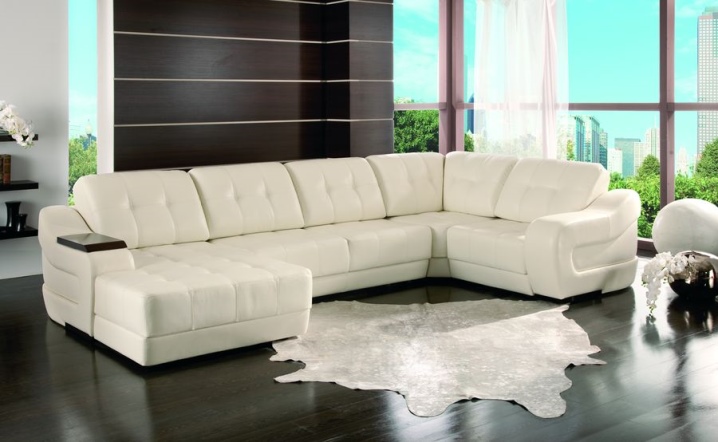
Faux suede
Artificial suede has a lot of properties that meet the needs of consumers. In addition, it has a lower cost than natural suede, but is in no way inferior in some quality characteristics.

Artificial suede is very durable and highly wear-resistant, does not fade and wears out only after a very long service life. However, there are a number of disadvantages, which, by the way, do not relate to the functionality of the material: when using chemical cleaning agents, it quickly becomes unusable, cannot be durable if the base is of poor quality.
Leatherette
Leatherette is quite practical and rather cheap material, suitable for upholstering sofas. Genuine leather can be very expensive, and since a large amount of leather may be needed to upholster an entire sofa, a more budget faux leather option is used.
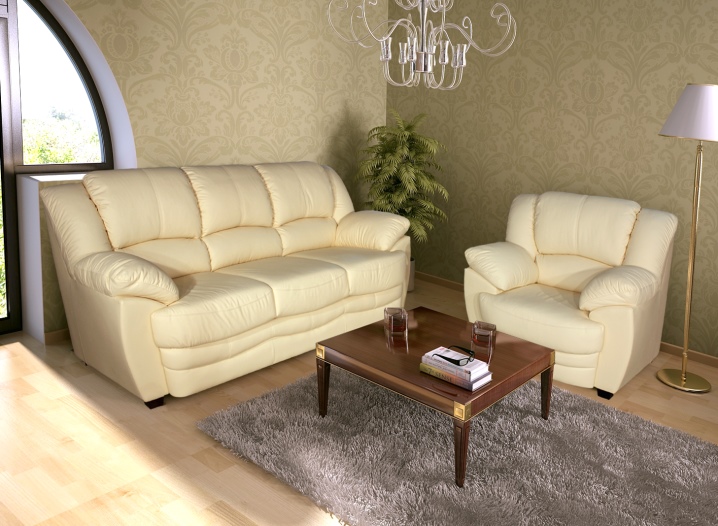
Leatherette has the following advantages: resistance to moisture, does not lend itself to quick abrasion, practical, easy to clean.
But, unfortunately, in addition to advantages, this material also has some disadvantages: it quickly burns, mechanical damage is clearly visible on it, and sticks strongly to naked human skin.
Eco leather
Eco-leather is popular, which also has an artificial origin, but is made from more environmentally friendly and hypoallergenic materials.

Jacquard
The material is woven and has a soft texture similar to rayon fibers. It contains both natural and synthetic fibers in equal proportions. The fabric is very strong and durable, so the sofa can last for many years without losing its original appearance. In addition, it does not fade, and the variety of colors provides a wide range of sofas to choose from.
Among the disadvantages of the material, a slightly slippery surface is noted, as well as the impossibility of using wet care, which is most often the most effective.
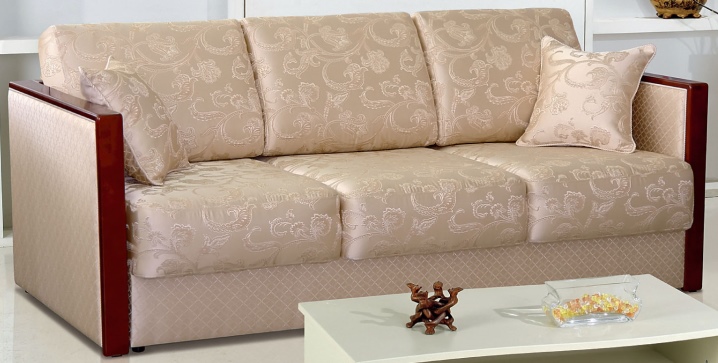
Chenille
The material, the surface of which resembles many small caterpillars, is obtained through a special interweaving of fibers and threads. This fabric is both natural and synthetic. The advantages include the preservation of the original shape - the fabric does not deform or stretch.
In addition, it is not prone to absorbing unpleasant odors and pellets.
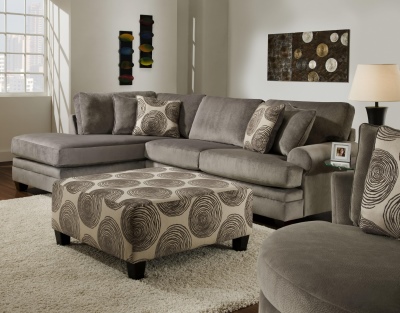
The fabric is practical, retains its original appearance and bright colors for a long time. The disadvantages include the lack of moisture-resistant properties, high cost and sensitivity to the mechanical effects of animal claws.
Tapestry
Tapestry is the most popular upholstery fabric. It is also called two-faced, since the ornaments that are applied on it can often be used both on one side and on the other. The fabric contains a large amount of cotton, and the rest of the fibers are natural. The material has a high degree of strength and wear resistance, has a moisture-resistant impregnation, does not fade and pleases customers with a wide range of flowers and patterns.
But, unfortunately, this material quickly wears out and burns out from exposure to sunlight, so you should not put a sofa covered with tapestry by the window.

Velours
The material is blended as it contains viscose, polyester and cotton fibers. In addition to the fact that the fabric is very attractive in appearance and pleasant to the touch, it is also quite durable, elastic and "breathable", that is, it allows air to pass through well.
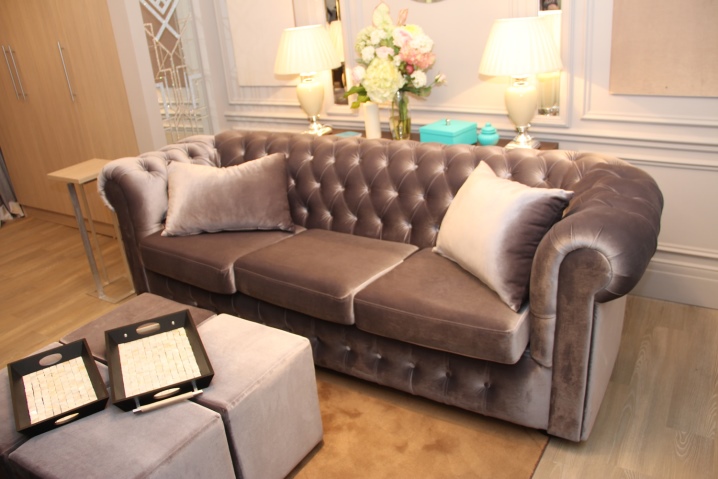
But there are also a number of disadvantages: extremely soft cleaning is applicable, stains are very difficult to remove, the material is subject to rapid loss of its original appearance, since it wears out very quickly.
In addition to the outer upholstery, in some cases it is necessary to replace the inner filling of the old sofa. Let's take a look at the most popular materials that are best suited for this:
- Polyurethane foam. A very practical, hypoallergenic material that can withstand heavy loads. Well ventilated and promotes good moisture circulation;
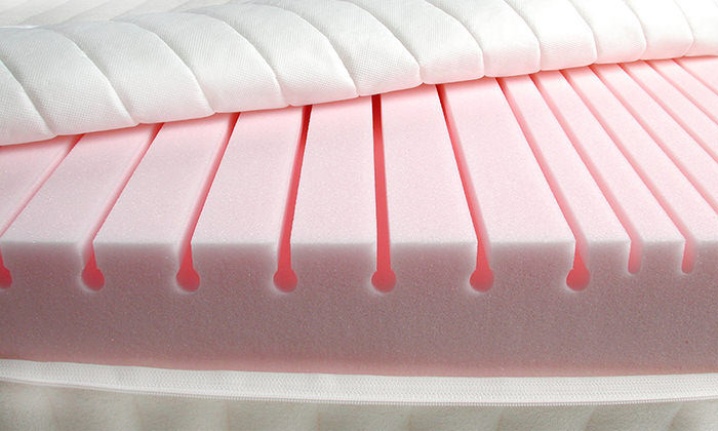
- Structofiber. Elastic, durable material that has a very reasonable cost. It is not subject to decay, does not allow the appearance of parasites and is the orthopedic basis of the sofa;

- Felt. Natural material obtained by felting wool using various techniques. The material is not used as the main mattress, but its insulation and wear-resistant features make it an excellent lining option;
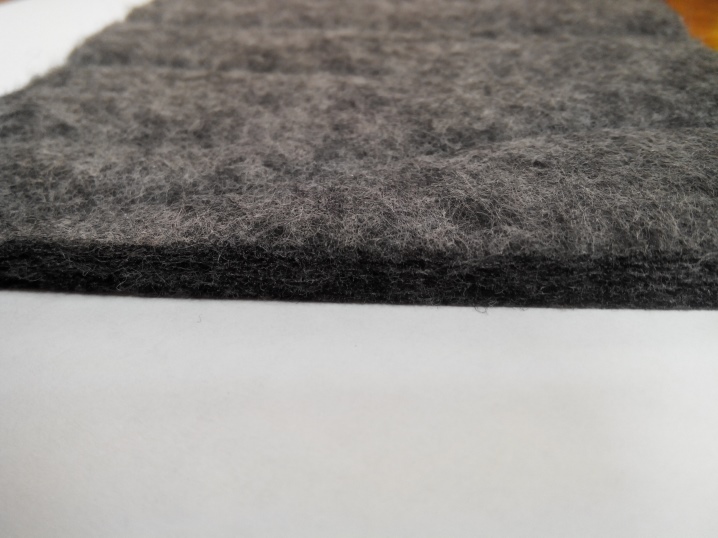
- Latex... It is considered elite, therefore it is used to fill expensive sofas. It is durable, elastic and belongs to the category of orthopedic materials;
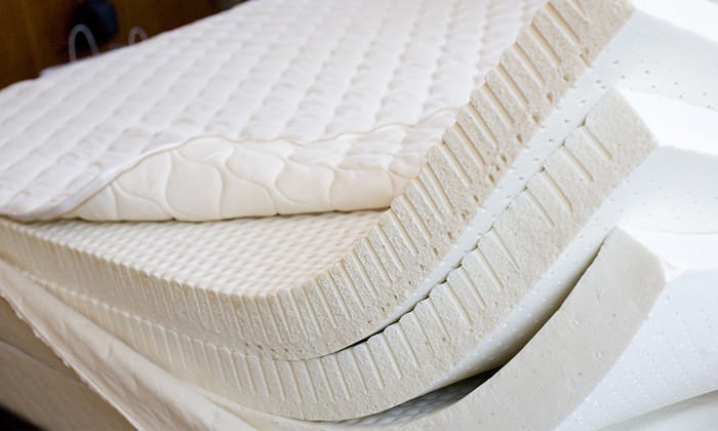
- Coconut fleece... Natural material made from coconut fiber.A mattress made of this material is absolutely not elastic and rather rigid, but it is hypoallergenic and quite profitable.
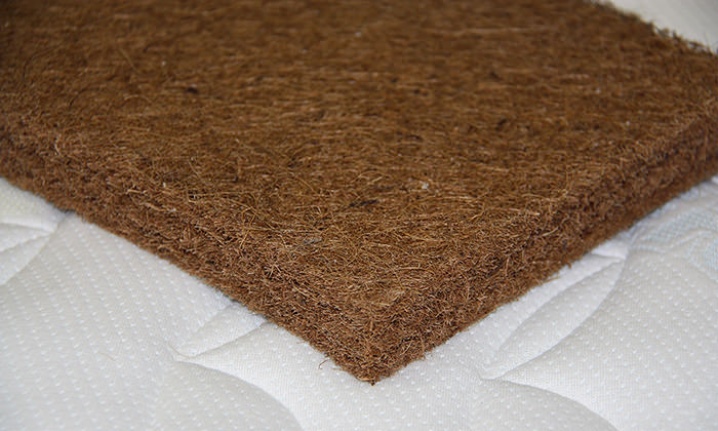
How to make correct material calculations?
It is not enough just to choose the right materials for the upholstery of the sofa. An important aspect is the calculation of the amount of fabric.
It is worth noting that it is better to take it a little more than the calculated amount, since unforeseen circumstances may arise and the fabric may not be enough.
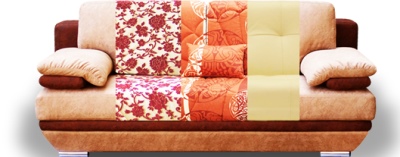
Calculating the amount of material is not as difficult as it might seem at first glance:
- First of all, it is necessary to carefully remove the old fabric that the sofa was upholstered in, keeping the details intact.
- The next step is to carefully measure them, and then summarize all the results regarding the horizontal shapes. To the resulting amount, it will be necessary to add the twentieth part of the result, which will go to the joining of the drawings and seam allowances. The resulting total will indicate the required length.
- The width is calculated in a different way and is much simpler: you just need to measure the widest part.
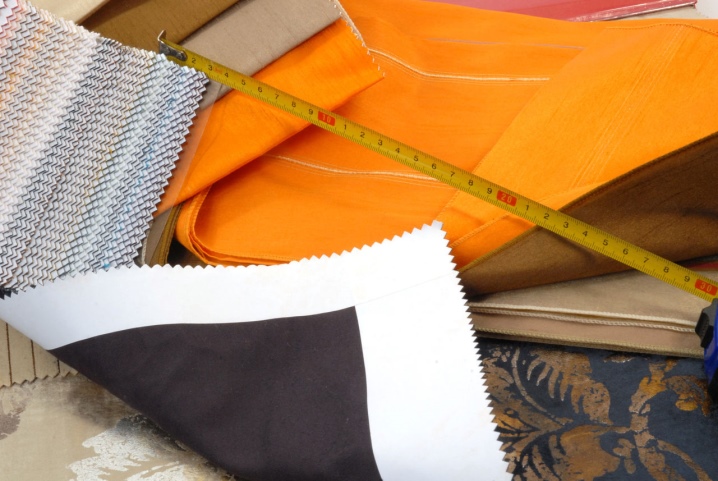
If you have cushions, you should take them into account as well. The amount of fabric required for sewing pillows is calculated as follows: the width and length of the products are measured, the results are added to each other and multiplied by half.
It will be necessary to add additional centimeters to be used for allowances.
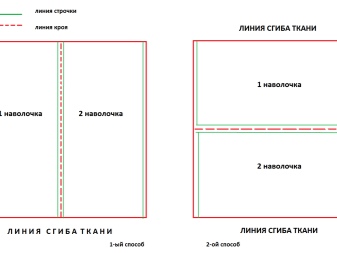
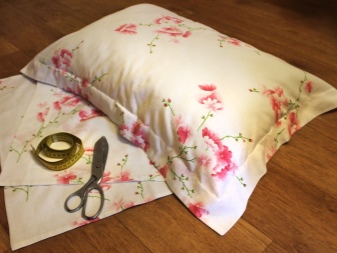
If the old upholstery cannot be removed or it is impossible to measure it, all measurements will be only approximate - usually double values of the length and width of the sofa are used. For the upholstery of a sofa with massive armrests and additional details, the length of the product should be multiplied by five in order to avoid a shortage of material.
Making a pattern
It is good if, when removing the old upholstery, it remains intact - then making a pattern will not be difficult. But what if it is impossible to cut new ones according to old patterns? In this case, you will have to make your own pattern, suitable for a particular sofa model.
First of all, it is necessary to measure all the parts that make up the sofa: backrest, seat and armrests.
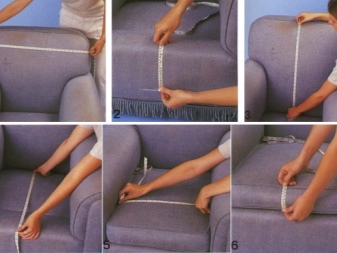
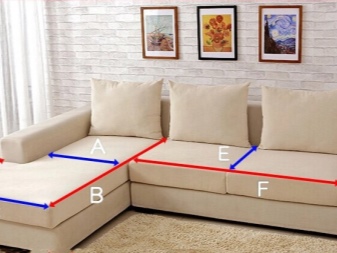
Let's take a closer look at the process of drawing up a pattern, using a simple example:
- Armrest. It is necessary to measure its outer, inner and front parts. As a result, for two armrests there should be six parts - a pair of all of the above.
- Seat. One solid piece is cut out, divided in half by a fold. One part of the part will cover the surface on which the sit, the other part flows into the lower front, vertically positioned surface.
- Back. Several parts are cut out: the front part in a single copy and two halves intended for constricting the back of the back. It should be taken into account that the back of the back should be almost twice as long as the front, since it completely covers the entire back of the sofa.
It is better to first apply the patterns on special paper, then cut out the details, and then transfer them to the material. This will save you from mistakes and damage to the fabric.

In addition, when cutting out parts, you need to add a few centimeters to each edge - for processing the edges of the material and for seam allowances.
Instruments
In addition to patterns and fabrics, special working tools will also be needed to stretch sofas, without which the whole process will be simply impossible. Let's take a closer look at the entire list of tools, as well as the functions that they perform:
- To dismantle old upholstery and some obsolete parts, and then assemble the sofa, you may need a wrench, hand screwdriver or electric screwdriver.
- To remove the upholstery and unhook the old furniture staples, you need pliers or a special device designed just for this.Be careful, as the staples have sharp ends and, if they fall to the floor and get lost, they can easily dig into your leg and injure you.
- To stretch the sofa at home and fix the material, it is better to use a furniture stapler and staples of the required length. For a small amount of work, you can use a mechanical model, but if you have to fit a large number of parts, it is better to opt for an electronic product.
- Need a hammer and a construction knife. These tools will come in handy if you have to adjust any parts directly in the process of fixing and securing them;
- Do not forget about a tape measure, a ruler, pencils and crayons, as well as sharp scissors. All these things will be indispensable when taking measurements, drawing up patterns and making fabric parts.
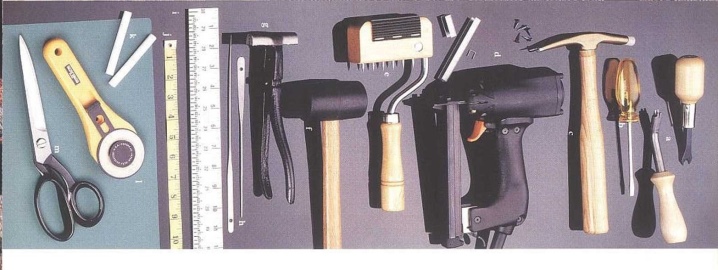
We sew a sofa at home with our own hands
Padding furniture is not such a difficult task as it might initially seem. It is necessary to study all the main stages of work in advance, as well as draw up a plan of upcoming actions, which will help facilitate the process and not miss a single important detail:
- First of all, you need to disassemble the sofa, since it is simply impossible to pull the piece of furniture in the assembled state. It is necessary to carefully unfasten and unscrew all the parts so as not to damage the fasteners, since after the constriction, all the parts will need to be returned to their places.

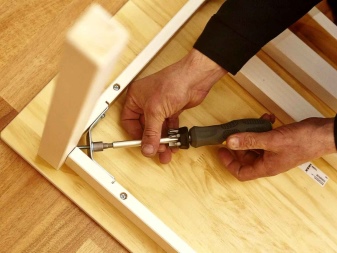
After disassembling the sofa, the next step is to remove the old upholstery material. It is necessary to carefully unfasten the staples and pull out the material. The mattress can also be replaced if necessary.
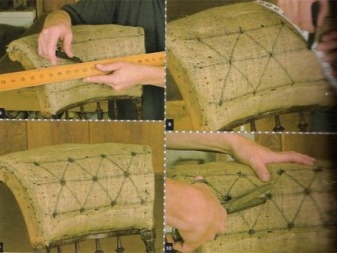
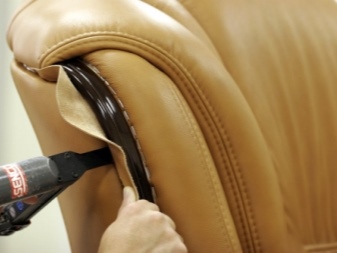
- Replacing the internal filling is the next step. At this stage, the parolone or the spring frame is replaced. It is worth noting that the first option is much easier to work with. In the case of a spring mattress, it may not be necessary to completely replace it. If the frame is in good condition, the springs can be repaired and reshaped using the tools at hand. If the springs are completely unusable, the replacement of the whole sofa mattress will be necessary.
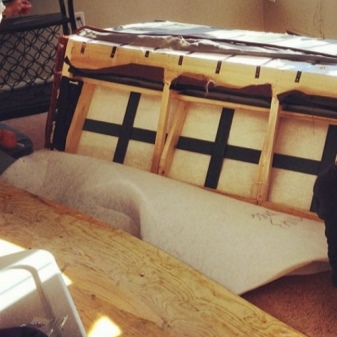
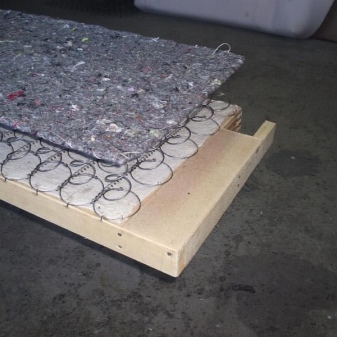
- Next, the filler of the back of the old sofa, cushions and armrests, if they are soft, are replaced.
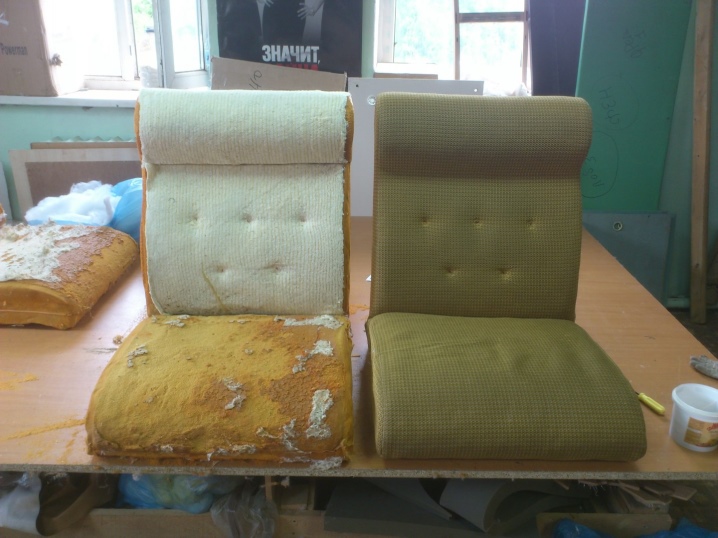
- After replacing the inner filling, it is necessary to cut out all the parts from the fabric and sew the corresponding parts together.
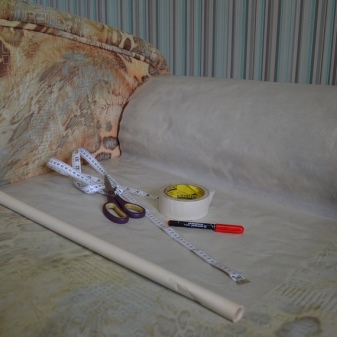
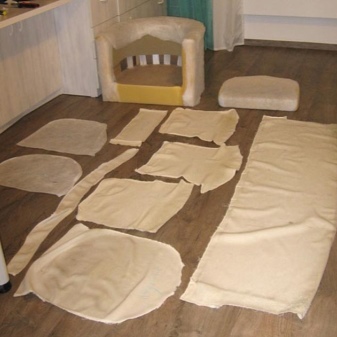
- After cutting and stitching the parts together, the upholstery stage begins. We tighten the armrests, seats, pillows and the back of the sofa.
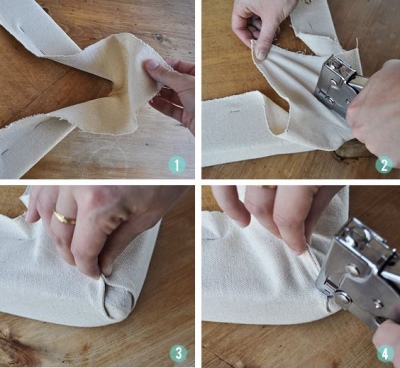
In the lower part of the seats, armrests and the frame of the sofa, the material is fastened with special furniture brackets.
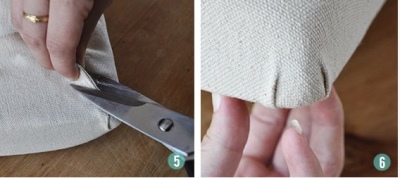
- After fixing all the fabric parts and completing the upholstery of the sofa, its final assembly follows. Upon completion of this stage, the sofa will take on a completely different appearance without changing its design.
A change of upholstery will help an outdated piece of furniture sparkle with new colors and become a stylish focal point for any interior.
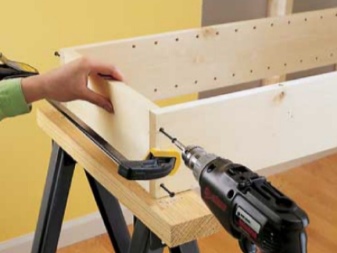
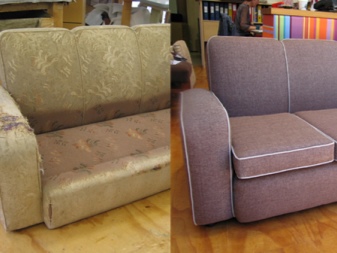
A more detailed process of stretching the sofa can be seen in the next video.
Self-hauling corner sofa
It is quite easy to drag a simple straight sofa model; difficulties may lie only in working with the armrests. But it is much more difficult to change the upholstery of a corner sofa, since there are different models, with different features that cause difficulties in work.
Consider the options for the waist of a corner sofa using the example of two models
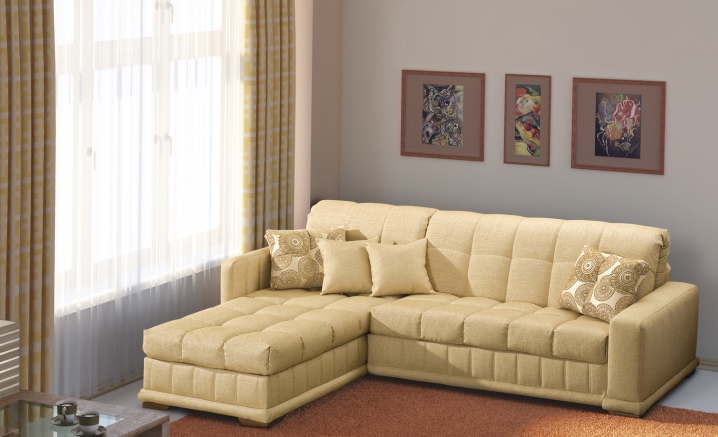
With a rectangular corner
A sofa with a rectangular corner piece is much easier to update as fewer parts need to be hauled. Often these models have a dolphin mechanism and large cushions that act as a backrest.
The main stages of upholstery of such a model are no different from any other:
- the sofa must first be disassembled;
- restore the mattress or completely change the filling;
- take measurements from all parts;
- cut out the new upholstery.
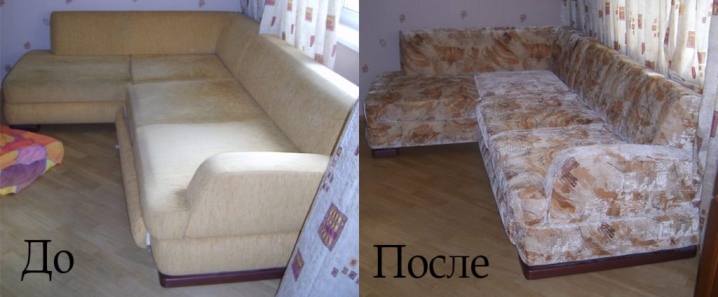
In addition to the standard details, you will need to cut out the upholstery for the corner rectangular element. If necessary, you also need to change the filling and upholstery of the hidden part, which becomes visible when the sofa expands and is part of the berth.
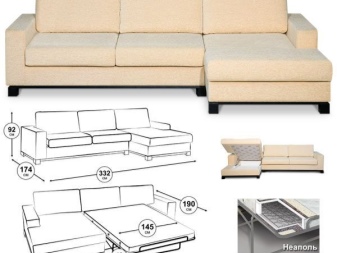
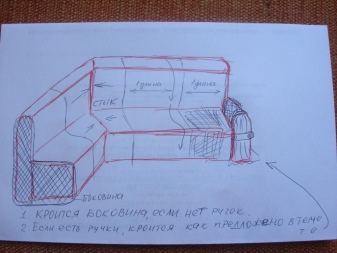
In addition, the armrests, the back of the sofa and all cushions need to be upholstered. Since they are an independent element and do not have a clear frame, you can change the filling of the pillows to any other option, for example, more hypoallergenic or environmentally friendly.
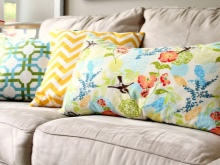
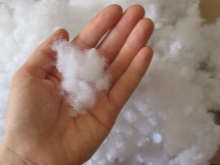
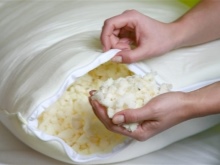
With rounded corner
You will have to put in a little more effort and approach the process with all your attention. The complexity of the upholstery of such a sofa lies in the unusual shape of the backrest, as well as the presence of additional semicircular elements attached to the armrests. In addition, the corner part of this sofa consists of a projecting square piece and a triangular piece in the corner.
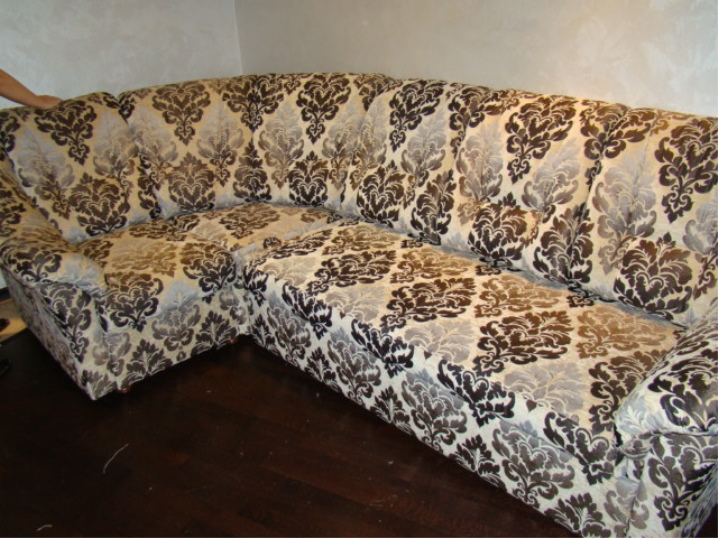
For the upholstery of the seats, you need three elements: a square, a triangle and a rectangle. In addition to the backrest, all the lower elements of the sofa, the parts that are in an upright position under the seats, also need to be hanged.
Stages of wrapping a model with a spring block
Padding a box-spring sofa can be tricky. Let's take a closer look at all the main stages of working with such a sofa mattress model:
- First of all, we select the right materials. For example, dense felt, which is used specifically for furniture, is perfect as a mattress seal for the version with springs.
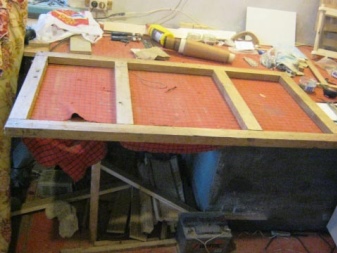
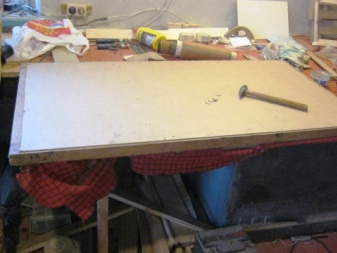
- Using a special furniture stapler, we attach the cut piece of felt to the wooden frame of the sofa seat. Use small but sturdy staples to help secure and hold the material against the base.
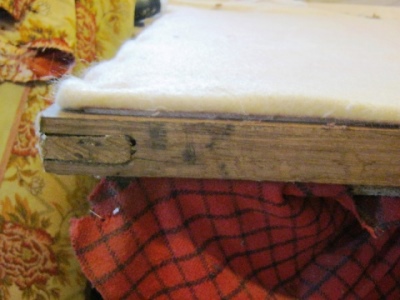
- This is followed by the preparation of the spring block. In case you purchased a new one and it does not fit in size, you need to adjust its size using a grinder and special nippers. The resulting spring block must be fixed to the same wooden seat base. You can use furniture staples and a stapler.
In this case, you should choose larger staples with longer legs in order to provide a more reliable fixation.

- After that, it is necessary to cut out the foam rubber strips corresponding to the height of the springs and lay them around the perimeter of the entire block. The foam will also need to be fixed at the base. In addition, the strips must be fixed to each other.
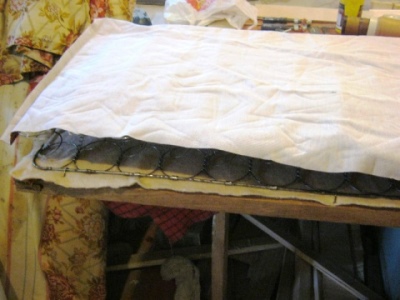
- Then it is necessary to cut out from felt and foam rubber parts corresponding to the size of the resulting frame and lay them out in the following order: first felt, then foam rubber. It should be noted that for reliability, the foam parts are best fixed with a special glue for foam rubber.
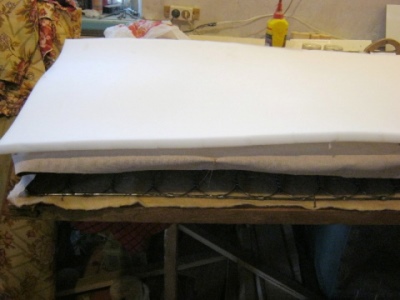
- On top of the resulting structure, put another layer of felt, a little larger. For better adhesion, it will be necessary to glue it in the middle, and stitch it along the edges with strong nylon constrictions.
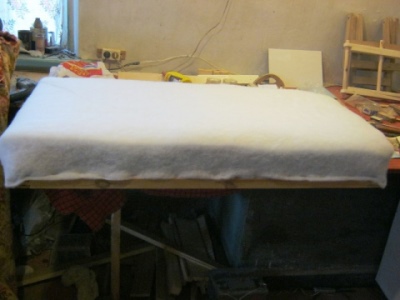
- After preparing the spring seat, it is necessary to cut out an upholstery of the appropriate size for it, stitch it in the corner places, then pull it over the seat and firmly fix it at the base of the frame with a furniture stapler.

Partial upholstery: step by step instructions
Sometimes it happens that the sofa does not need a full upholstery, but only partial upholstery. This may be relevant if there are scuffs and places with formed pellets.
Let's take a closer look at the step-by-step instructions for partial constriction using the example of one sofa:
- Step 1. It is necessary to disassemble the sofa, undoing absolutely every detail, without exception.
- Step 2. We carefully remove all the upholstery without damaging the well-preserved parts. If some parts are not hacked, they do not need to be touched (in this case, these are the lower parts and the bases of the armrests).
- Step 3. We carefully inspect all the filling of the sofa. We will restore if there are any serious defects.
- Step 4. We cut out the necessary parts from new fabric (in this case, these are the seats, the upper parts of the armrests, part of the backrest and cushions).
- Step 5. We save the upper part of the back and sew it with the parts that are subject to replacement.
- Step 6. We make a constriction and fasten the material with wooden frame bases.
- Step 7. We complete the constriction process and assemble the sofa.

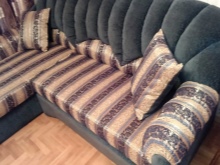
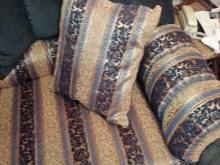
Tips from the masters
When pulling the sofa yourself, you should not rely only on your own strength. It is best to read the advice of specialists who can help you in your work and save you from ridiculous mistakes.
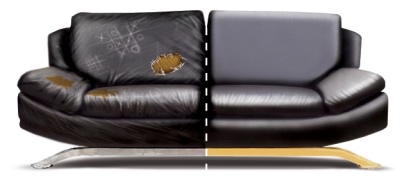
Consider the most popular tips from the masters for stretching sofas:
- It is worth using dense materials. The sofa is the most popular furniture in the apartment and is used the most, therefore it needs to be used for constricting a dense, wear-resistant material.
- If you deliberately purchase an old sofa for making a constriction, you should take care of the safety of the upholstery, since replacing it can be financial and energy-intensive. In addition, you should not choose highly complex models in order to reduce the time spent on hauling.
- It is not necessary to change the material of the upholstery if you want to change only the shade of the sofa. It will be enough just to paint the material.
- It is better to leave the stitching of fabric parts for last, after replacing the filling, since when using new material, the volume of the seats and backrests may slightly decrease or increase.
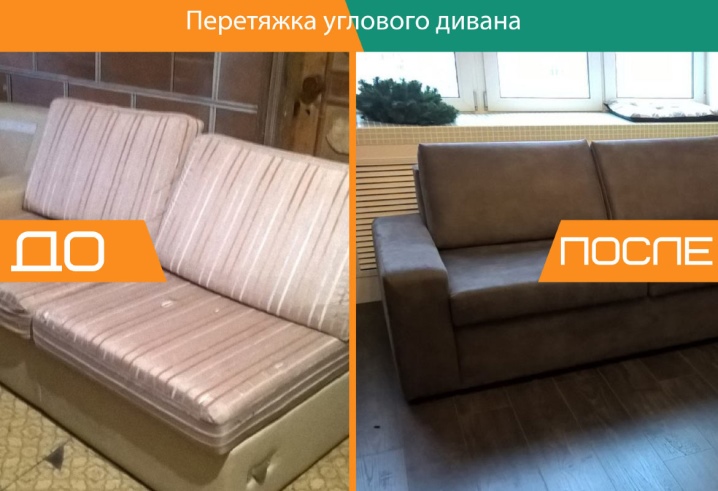
Banner ideas
The old wooden frame sofa is in need of a complete renovation to give the piece of furniture a more modern look. In this case, there is a need for the construction of new, more voluminous and softer armrests, as well as the reconstruction of the lower part and its constriction with fabric material.
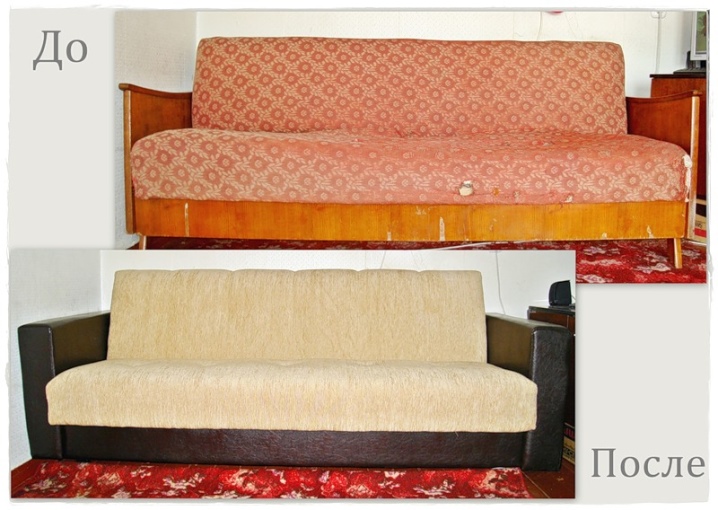
In this case, a dark brown leatherette and a light monochromatic chenille are used.
Soft velor is used to stretch the old leather sofa. The ivory shade combined with the velvety surface looks amazing.
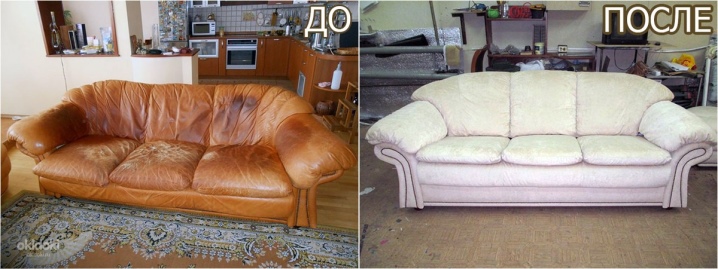
A very stylish option for the upholstery of a small sofa. In this case, a thick woolen drape was used. The combination of elements of different shades gives the product an extraordinary charm and unique style.
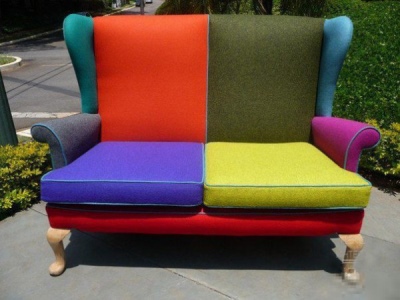
The white leather sofa with soft cushions will be covered with bright green flock fabric, thanks to which the piece of furniture will sparkle with completely new colors.
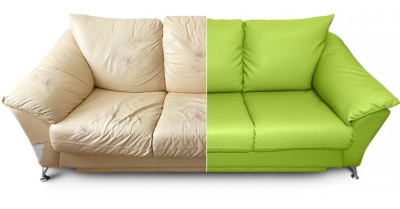













The comment was sent successfully.